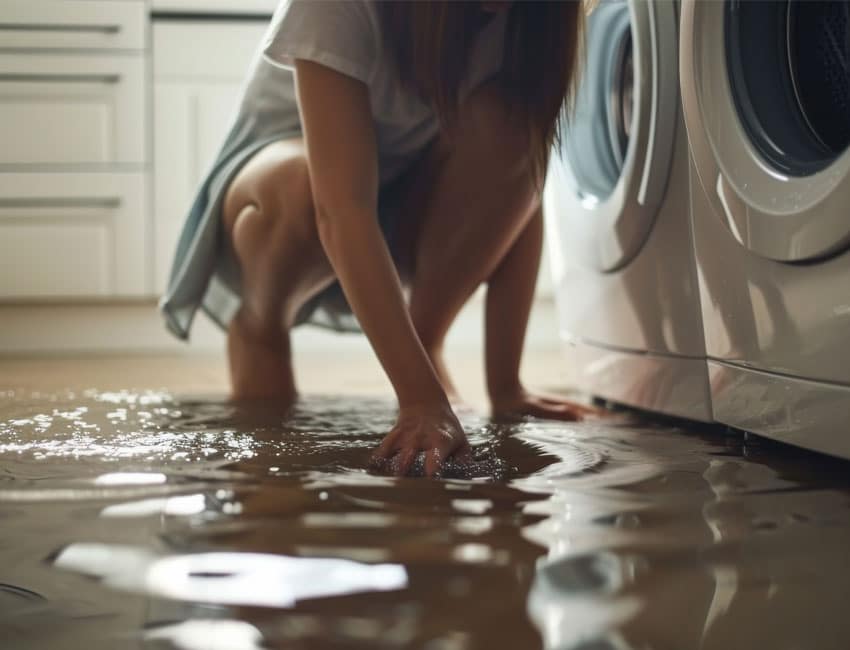
In Tucson, Arizona, water damage might not seem common, but between monsoon floods and plumbing issues, it can quickly become a nightmare for homeowners and businesses. Whether it’s a roof leak or a faucet malfunction, water can seriously impact both the structure and safety of your property. Acting quickly and following a thorough drying process is essential to prevent mold growth and further damage. In this blog, we’ll explore the drying process and why professional restoration services are key to protecting your property.
Table of Contents
Failing to properly dry your property after water damage can lead to severe consequences. In Tucson’s desert climate, where post-monsoon humidity lingers, moisture trapped in your property can become a breeding ground for mold in as little as 24-48 hours. Left untreated, mold can compromise indoor air quality, cause respiratory issues, and lead to extensive structural damage as it spreads unseen behind walls and floors.
Understanding Water Damage Categories
Before initiating the drying process, professionals categorize water damage based on its source and contamination level:
- Category 1 (Clean Water): Water from a clean source, like a broken faucet or an overflowing bathtub. While less hazardous, if left untreated, it can still lead to mold growth.
- Category 2 (Gray Water): Water contaminated with chemicals or debris, often from washing machines or dishwashers.
- Category 3 (Black Water): Water that is heavily contaminated with harmful substances, such as sewage or floodwater.

Identifying the correct category helps restoration professionals determine the appropriate drying methods and safety protocols. Each category requires a tailored approach to ensure thorough drying and prevent potential hazards.
The Drying Process Explained

- Initial Assessment and Documentation
Professional restoration begins with a thorough assessment of the affected area. Technicians document the damage to help with insurance claims, identify the water category, and establish a drying plan tailored to your property. - Water Extraction
The first step in drying is water extraction. Restoration teams use specialized equipment to remove standing water as quickly as possible, which prevents further damage and reduces drying time. - Commercial Drying Equipment Used in the Process
Once the bulk of the water is removed, professionals deploy high-powered air movers and industrial dehumidifiers to ensure optimal airflow and reduce moisture in the air. This combination speeds up the evaporation process and removes hidden moisture from walls, floors, and furniture.
Click to read the blog on Dangers of Hidden Water Damage
To ensure that all moisture is effectively removed, professionals use moisture meters and thermal imaging tools to detect hidden pockets of moisture that might otherwise go unnoticed. These devices help technicians continuously monitor moisture levels throughout the drying process, ensuring every area is properly dried and preventing long-term damage or mold growth.
Timeline for Effective Drying
The timeline for drying varies depending on factors like the extent of the water damage, the type of building materials, how long the water has been present, and the current weather conditions. On average, it takes 3-5 days to fully dry a home or business after minor water damage, while more extensive damage can take longer.
DIY vs. Professional Drying: What Tucson Residents Should Know
While DIY methods like fans and towels may seem sufficient, they often fail to address hidden moisture, especially in our unique climate. Professional drying offers several advantages:
- Expertise: Professionals know how to target hidden moisture, especially in adobe and stucco construction, and prevent further issues.
- Specialized Equipment: Industrial air movers, dehumidifiers, and moisture meters are far more effective than household fans.
- Safety Protocols: Proper containment techniques ensure mold spores or contaminated water don’t spread.
Insurance Requirements Related to the Drying Process
Proper documentation is key to navigating insurance claims. Our restoration professionals work with your insurance company to ensure all steps are recorded, from the initial assessment to the final moisture readings. Most insurance policies require prompt action, so it’s crucial to begin the drying process immediately.
Conclusion: The Critical Role of Professional Drying in Tucson
Water damage can be a challenging issue for any property owner, but with a professional drying process, you can prevent mold, structural damage, and health risks. Tucson residents, especially during monsoon season, should act quickly to avoid lasting damage. Trust experienced restoration companies like Commercial Cleaning and Restoration to handle the drying process and restore your property efficiently and safely.
At Commercial Cleaning and Restoration, we combine local knowledge with industry-leading techniques to protect your property from the hidden dangers of water damage. Contact us today for a free consultation and let us help you safeguard your home or business from water damage threats.
Mold Remediation • Air Testing
Water Removal
At Commercial Cleaning & Restoration, we want the best for you and your home and we will work to prove it to you.
We also provide carpet and area rug cleaning, tile and grout cleaning,
upholstery cleaning, and carpet repair.

